This is a continuation of testing of the following macro lenses :
- Sony 90mm f/2.8 FE Macro
- Leica 100mm f/2.8 Apo Macro-Elmarit-R
- Zeiss 100mm f/2 Makro-Planar ZF
- Nikon 105mm f/2.8 Micro-Nikkor G VR
The test starts here:
The first series of tests is aimed at determining focus shift and longitudinal chromatic aberration (LoCA) at 1:2 (half size on the sensor), See this page for the test protocol:
The current version of the Nikon 105mm f/2.8 macro lens it the latest in a long line of 105 macros (Micro-Nikkors in Nikonese). Over the years they’ve gotten faster, learned how to focus to 1:1, acquired autofocus, and now, vibration reduction. Through all that time they have enjoyed an enviable reputation for superlative performance. The lens has grown in size over the years. With the adapter for E-mount attached, it’s the largest lens in this test, although not by much. The focusing helicoid is numb and very fast. It doesn’t take much over 180 degrees to get the focus point from infinity to life size. As you might expect, the lens is essentially impossible to focus accurately with the ring. However at distance you can use the autofocus and close up you can leave the ring alone and move the camera, so that is not a crippling flaw.
LoCA at f/2.8:
The vertical axis is MTF50, measured in cycles per picture height (cy/ph). The horizontal axis is camera position shift in mm. The points on the left side of the graph are with the camera farther away from the subject than the points on the right. I used a 50 um (0.05 mm) step size. The three raw channels are plotted.
The spread among the peaks of the three raw channels is about half a millimeter, which is excellent.
The peak MTF50 of the blue channel is disappointing.
At f/4:
The lens as a whole is getting sharper, and the blue channel, though still last, has improved dramatically. The LoCA remains low.
At f/5.6:
Now we are seeing good solid sharpness, and the LoCA remains low.
At f/8:
We’ve lost some sharpness, and the depth of field has increased to the point where the LoCA will not be a problem.
At f/11:
The LoCA is inconsequential.
Now we’ll regraph the same data in order to show focus shift.
In the red channel:
Focus shift is non-monotonic. That’s a good thing. focusing wide open should not be a problem.
The green channel:
F/4 and f/5.6 are the best apertures.
The blue channel:
For the blue channel, f/5.6 and f.8 are the best apertures. F/5.6 sounds like the plan.
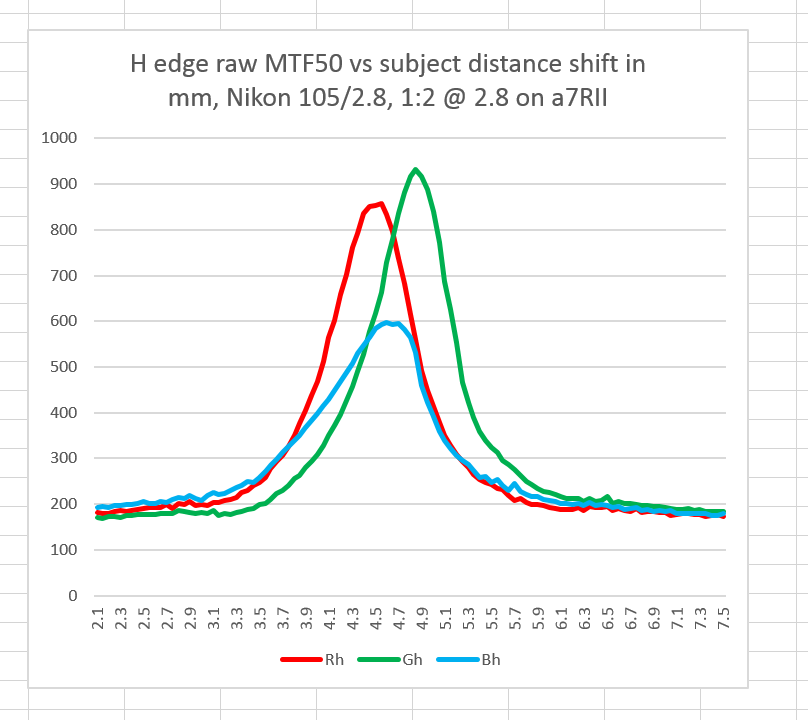
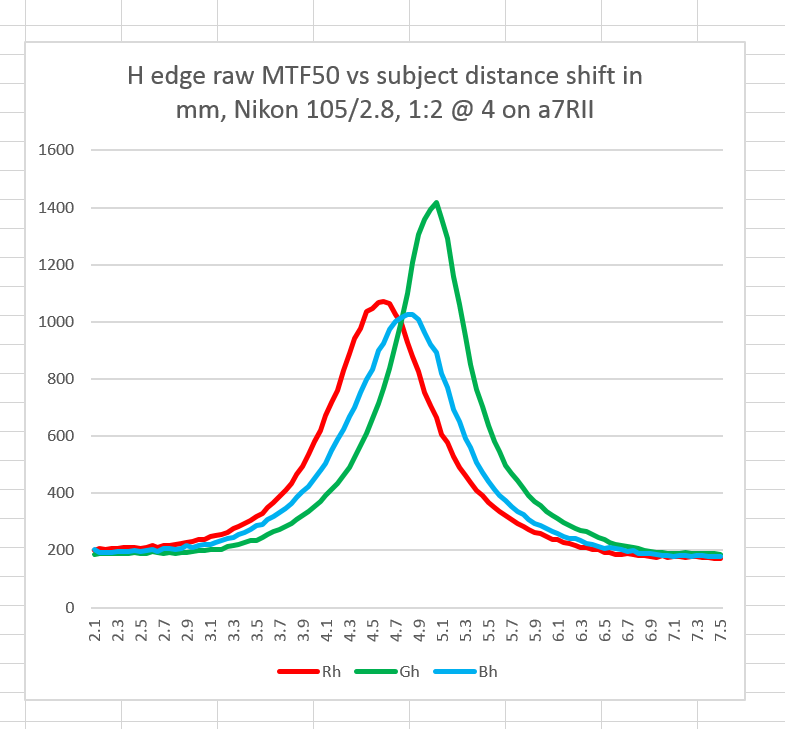
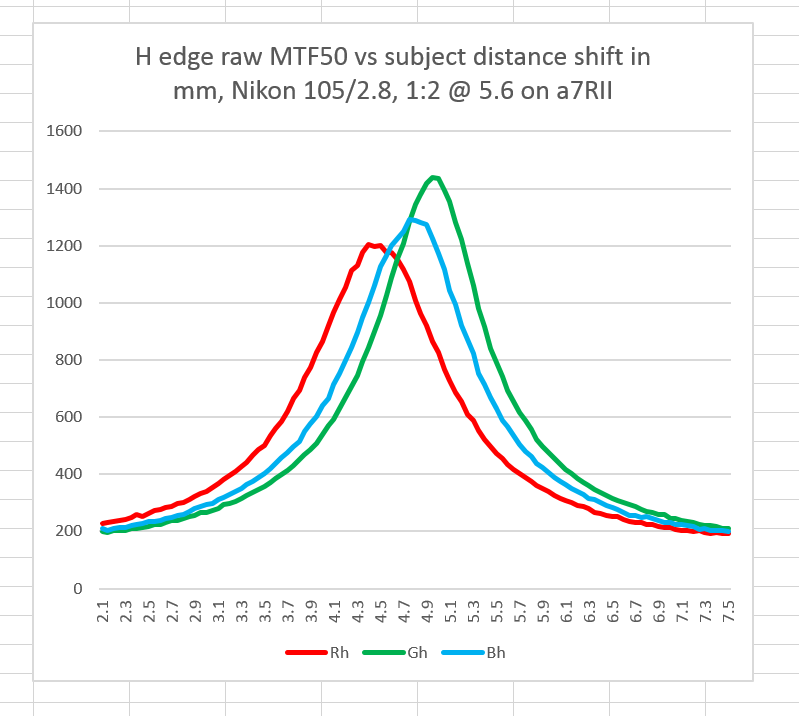
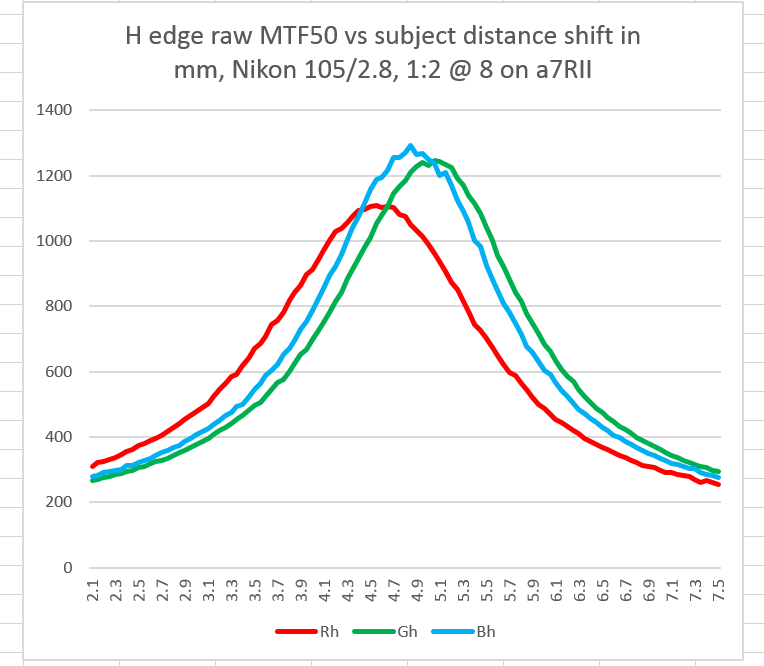
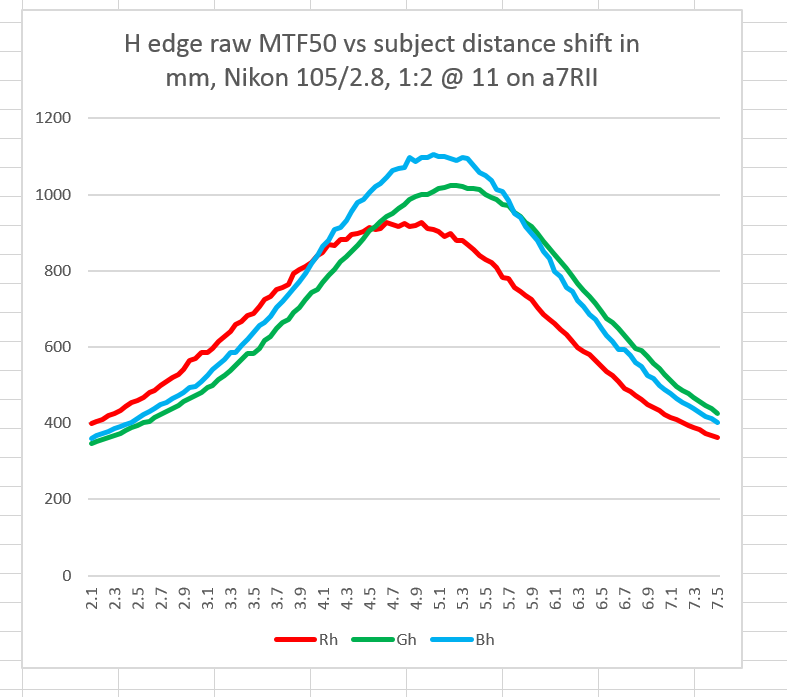
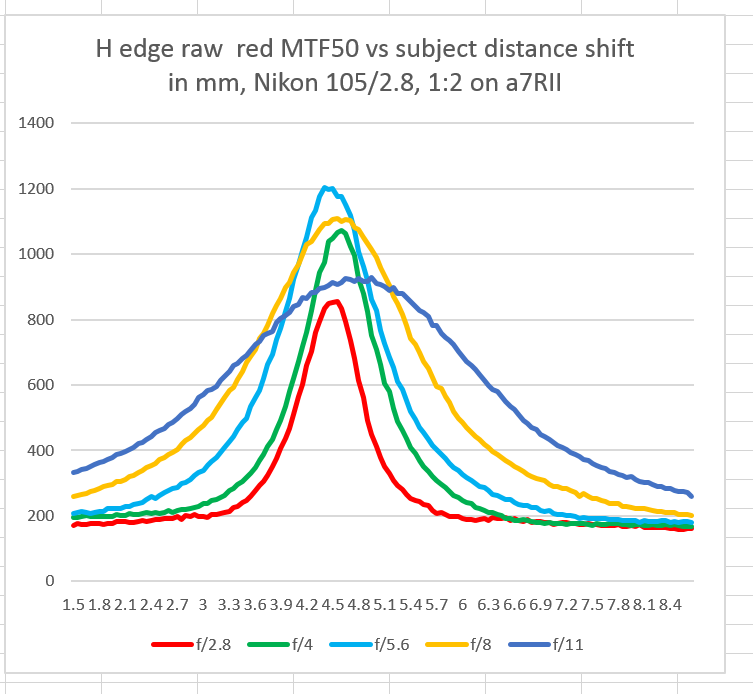
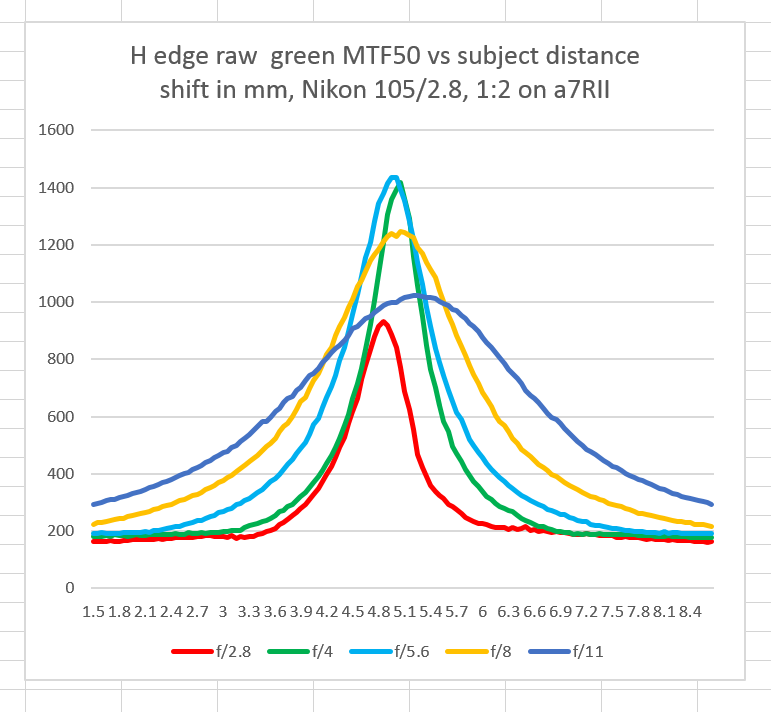
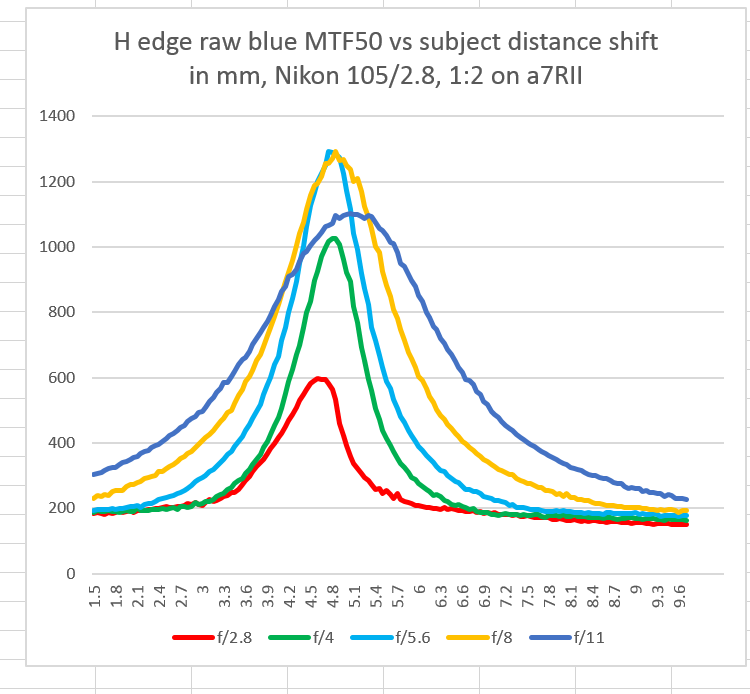
CarVac says
You can clearly see the blue channel softness in test chart shots, even on only 24mp.
http://www.the-digital-picture.com/Reviews/ISO-12233-Sample-Crops.aspx?Lens=645&Sample=0&FLI=0&API=0&LensComp=0&CameraComp=0&SampleComp=0&FLIComp=0&APIComp=0